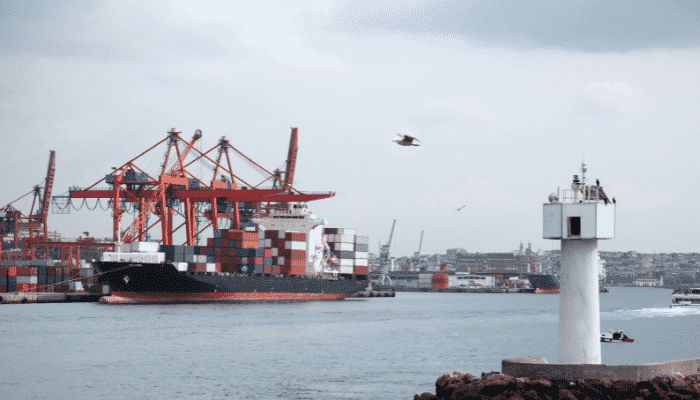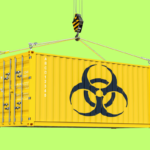What Are Common Freight Surcharges and Accessorial Fees in Container Shipping?
Container Shipping has a reputation of being a very complicated business, with the industry being beset by complexities at every stage of the shipping process.
While the reputation is not unjustified, it is primarily due to the global nature of the business, involving multiple jurisdictions, a large number of stakeholders and the inherent uncertainties, ever-changing commercial dynamics and geo-political factors that the industry is exposed to.
These intricacies are also manifested in the pricing structure of Container Shipping companies, where carriers apply to most shipments a host of surcharges and accessorials, in addition to the basic ocean freight (BAS).
It is not uncommon for smaller shippers or individuals to book a container for transporting their personal effects or other cargo, expecting to pay the basic ocean freight quoted by the Container Carrier, and then being shocked at receiving a total bill which includes a number of other surcharges, besides a total amount considerably higher than the base freight.
Most of these surcharges are levied to cover various other costs that are incurred by Carriers (in addition to the basic cost of transporting cargo from origin to destination).
While these freight surcharges and accessorials fees are the accepted norm in the container shipping business, people outside the industry often lack awareness of these and tend to misconstrue this as an example of profiteering.
In this article, we will look at some of the more common freight surcharges and understand what costs and risks they are intended to cover.
Basic Ocean Freight (BAS)
BAS covers the basic cost of transporting a container or cargo from origin to destination. When the Container Carrier receives a rate enquiry for any corridor, the quote usually states “BAS USD xxx + surcharges/ accessorials”.
The BAS is charged in US dollars and is a derivative of the vessel cost, the distance of the journey, other fixed costs and costs that can be attributed to that particular sailing.
The BAS often differs from customer to customer, depending on factors such as cargo type, nature of the commodity, overall container volumes that the customer controls, regularity and consistency of cargo flow, corridors involved, routing, equipment size and type, strategic importance to the Container Carrier etc.
BAS is also subject to the market dynamics of demand and supply, as well as the rate levels quoted by competition (which, in a highly competitive and oversupplied market, a carrier will be compelled to match, in order to increase utilisation rates or simply to avoid losing cargo).
Bunker Adjustment Factor (BAF)
The Bunker Adjustment Factor is sometimes also referred to as the Fuel Adjustment Factor (FAF) and is meant to cover the cost of fuel incurred by Container carriers.
Bunker costs are the largest component of a Carriers operating costs, with some estimates pegging it at almost half of a carrier’s total variable expenses.
Prices of fuel are subject to vagaries of the market, and prone to frequent fluctuations and often display extreme volatility.
Since contractual rates provided by Carriers are usually valid for 1 year, the BAF quantum is based on existing fuel costs and estimates thereof for the forthcoming year, which in turn renders Carriers vulnerable to the risk of large and unforeseen increases in fuel costs, which can have a potentially debilitating impact on a Carriers cash flow and profitability.
It is to cover this risk that Carrier generally charges a certain amount as Bunker Adjustment Factor, applied on a per-container basis.
BAF is primarily dependent on average oil prices and the average bunkering consumption for a corridor
The amount is generally subject to slight revisions in the short and medium-term, depending on the extent of the increase/ decrease in global oil prices.
Emergency Bunker Surcharge (EBS)
While normal variations in prices of fuel are covered by the BAF, oftentimes prices of oil and fuel increase drastically due to actions of oil cartels like OPEC or geopolitical friction or market disruptions due to other factors.
Such upward movements in the prices of oil have an inflationary impact on the fuel bills of Carriers, which the normal BAF is inadequate to cover.
In such situations, therefore, Container Carriers impose an Emergency Bunker Surcharge, to cover the unanticipated increase in fuel costs, with the charge being withdrawn as and when the situation stabilises and oil prices hold steady at expected levels.
Origin Terminal Handling Charges (OTHC)
While Container Carriers are responsible for transporting containers from one port to another, the container will have to be delivered to the port, from where it will be moved alongside the berth (in time with the vessel arrival) and then loaded onboard the vessel using cranes and manpower.
The handling of the container from the port’s storage area to the berth and thereafter onto the vessel is handled by the Port/ Terminal, and charges, therefore, are billed to the Container Carrier.
Container Carriers pass this cost on to the customer in the form of Origin Terminal Handling charge.
OTHC is generally standard for a port and does not display a lot of variances unless the container requires additional handling or special equipment or inspection etc.
The OTHC is usually charged in the local currency of the port’s country, on a per-container basis, with different levels for different container types and sizes.
Destination Terminal Handling Charges (DTHC)
DTHC is the destination counterpart of the Origin Terminal Handling Charge. DTHC is charged to cover costs incurred at the destination port for unloading the container, moving and storage within the port, and other/additional handling requirements if any.
The DHC is billed by the port to the container carrier, who in turn pass it on to the carrier.
The DTHC is usually charged in the local currency, rather than in USD (except in some countries).
Bill of Lading Fee (B/L Fee)
The Bill of Lading Fee is charged by Container Carriers for issuing the Bill of Lading to the Shipper or Exporter.
This is generally a standard amount, intended to cover the administrative and stationery costs incurred by Carriers.
While Carriers might charge separate Documentation fees for other documents that might be mandated in a particular country, such charges depend on the documentary requirements in each country and hence vary greatly from country to country and port to port.
The Bill of Lading is however a standard document and required for all shipments, wherefore the Bill of Lading Fee is mandatory and hence levied as a standalone surcharge.
The BL Fee also varies depending on the mode. With most Carriers having invested significantly in their IT systems and actively encouraging customers to move to online channels, they offer the option of issuing BL’s electronically for which the charges are lower than the charge for issuing a manual BL.
The Bill of Lading Fee is charged per BL, irrespective of the number of containers.
Origin Documentation Fee (ODF) / Destination Documentation Fee (DDF)
Some countries have additional documentary requirements, for which Carriers will levy an additional charge. Depending on whether such documentary requirements and charges are applied at origin or destination, they will be designated as ODF or DDF.
Currency Adjustment Factor (CAF)
The CAF is levied to cover the revenue risks arising from fluctuations in currency exchange rates. Most global container carriers use the US Dollar for billing and accounting purposes.
While the Basic Ocean Freight is charged in USD, local freight surcharges are generally billed in the local currency of the country concerned.
In the case of shipments from countries with relatively unstable currencies or where exchange rates vis a vis the USD show considerable fluctuations, Carriers are forced to assume the risk of reduced revenues or partial cost recovery, whenever exchange rate fluctuations are beyond the normal range.
Container carriers, therefore, levy CAF to protect themselves from foreign exchange risks.
Suez Canal Transit Fee (SCT or STF)
The Suez Canal links the Asian continent (home to the world’s biggest manufacturing locations such as China, Japan and South Korea) with the European continent and also offers an alternative routing from Asia to the US East Coast ports.
It is thus an important artery of the global economy, offering a much shorter passage on the Asia-Europe trade lane (as opposed to routing the vessel around the Cape of Good Hope, which will involve traversing the entire coast of Africa), thus resulting in considerable savings in terms of bunker costs and transit times, besides faster turnaround times and higher asset turnover.
Container Carriers, therefore, schedule their sailings via the Suez Canal, for which the Suez Canal Authority charges the Suez Canal Transit fee.
This fee is levied in USD, on a per-container basis.
Panama Canal Transit Fee (PCT)
The Panama Canal is the second most widely used canal in international trade, offering a shorter route passing between the continents of North America and South America.
This route is commonly used by vessels plying the Trans-Pacific trade, sailing to/ from Asia and sailing across the Pacific Ocean en route to the US West Coast and East Coast ports.
While the US West Coast ports are directly accessible from the Asian origins, the voyage to East Coast ports would involve sailing around the entire coastline of South America, had it not been for the Panama Canal.
As is the case with the Suez Canal, the savings are considerable, in terms of costs and time, with added advantages of faster and higher inventory and asset turnovers.
The Panama Canal Authority levies a per container charge for passage through the canal, which is ultimately borne by the exporter.
Until 2016, the Panama Canal could accommodate only circa 5,000 TEU vessels, which inhibited its usage due to its inability to service the ever-increasing vessel sizes.
As a consequence, it lost considerable traffic to the Suez Canal, as Carriers utilising vessels greater than 5,000 TEUs to serve the Asia-US East Coast trade were constrained to use the Suez Canal.
Recognising this competitive threat, the Panama Canal Authority embarked upon an ambitious expansion plan, widening the canal to allow the passage of 15,000 TEU vessels.
The expansion has thus provided a viable shorter alternative to the Suez Canal route, to which Carriers have responded positively by redesigning their service networks and scheduling more services via the Panama Canal route.
Conclusion
In the last decade or so, Container Carriers have been attempting to simplify the cost structure and bring more transparency in their quotes.
Where historically, Carriers have applied a multitude of surcharges covering each activity, their focus now is on reducing the number of freight surcharges and reducing ambiguity about the nature of individual surcharges.
Carriers also offer ‘All-in’ rates to select big customers, where the Basic Freight rate is high but inclusive of all surcharges.
This provides greater freight spend visibility to exporters and ensures that they are not hit with any unexpected surcharges. This is however slowly becoming redundant as Carriers realise that cost recovery through the application of surcharges and accessorials is often more efficient and accurate.
Thus, as Carriers simplify their pricing structure, we will see greater clarity in the application of freight surcharges and the total freight bill, which will benefit exporters and the overall trade, and go a long way in reducing some of the complexities that are associated with Container Shipping.
You might also like to read:
- Watch: How Container Shipping Works – The Process Of Transporting Cargo In Containers
- What are Container Carrier Alliances?
- 10 Largest Container Shipping Companies in the World in 2021
- Lesser Known Surcharges in Container Shipping
- What are Dedicated Freight Corridors (DFC)?
Disclaimer: The authors’ views expressed in this article do not necessarily reflect the views of Marine Insight. Data and charts, if used, in the article have been sourced from available information and have not been authenticated by any statutory authority. The author and Marine Insight do not claim it to be accurate nor accept any responsibility for the same. The views constitute only the opinions and do not constitute any guidelines or recommendations on any course of action to be followed by the reader.
Do you have info to share with us ? Suggest a correction

About Author
Jitendra has over 20 years of international experience in the Container Shipping, Ports and Logistics industry, spanning 3 diverse geographies, wherein he has been involved in the commercial and strategic aspects of the container business.
Latest Maritime law Articles You Would Like:
Latest News
- What are Logistics Risks?
- How Port and Terminal Operators Can Control Emissions?
- Minimum Quantity Commitment (MQC) and Liquidated Damages in Container Shipping: Concept and Relevance
- MARPOL (The International Convention for Prevention of Marine Pollution For Ships): The Ultimate Guide
- The Ultimate Shipping Container Dimensions Guide
- A Comprehensive Overview of IMDG Code for Shipping Dangerous Goods
Subscribe To Our Newsletters
By subscribing, you agree to our Privacy Policy and may receive occasional deal communications; you can unsubscribe anytime.
















